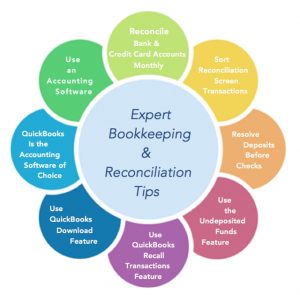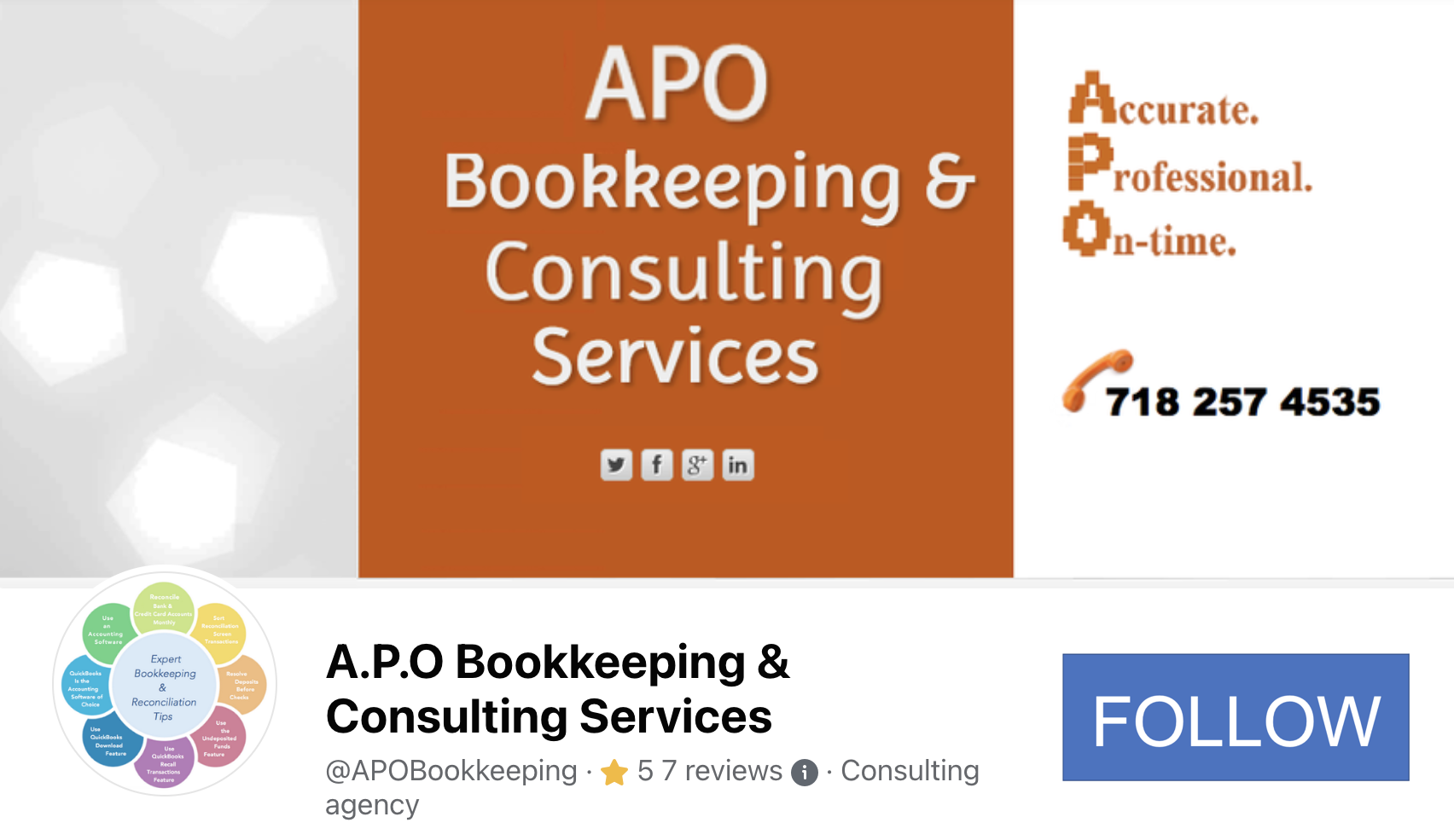As the name suggests, reconciliation is making sure two given sides are on par with each other. In order for reconciliation to take place, two things are needed: 1) There must be a statement from the institution – bank, credit card company, or other creditors, and 2) There must be a period for example, January 1 through January 31, 2020 to reconcile both sides with. It is the most important step in the bookkeeping and accounting arena, and the only way to ensure the numbers in reports are accurate. Every area of bookkeeping where monies are coming in and going out, can be reconciled. The most common types are:
- Bank Reconciliation
- Credit Card Reconciliation
- Payables Reconciliation
- Receivables Reconciliation
Bank Reconciliation
In bank reconciliation, you need to ensure that all the transactions on the bank statement are in your ledger for that particular period. Bank charges such as the monthly maintenance fee, wire fees, or other fees assessed by your bank, may not be in your ledger. You may find that after entering them, your account is reconciled. If you are using a software such as QuickBooks, the “difference” in your reconcile window should be zero; if there is an amount other than zero, your reconciliation is off by that amount. If you issue checks, you may find that you have check transactions in your ledger for the same period that are not on your bank statement for that period. These checks may not have been presented to your bank as yet, and may very well be on your next month’s statement. Reconcile the ones that are on your statement, and leave the others unchecked in your reconcile window. They will be there to be checked off when they are presented and show up on future bank statement(s).
Credit Card Reconciliation
Like bank reconciliation, credit card reconciliation entails ensuring that the transactions on your statement are in your ledger and vice versa. Fees assessed by your credit card company are often not in your ledger as these are usually assessed at the end of each period and included on your statement for that period. After entering them in your ledger your account should be reconciled. If not, there may be other transactions on your statement that are not entered in your ledger. There may also be an amount or amounts that are entered incorrectly for example $329.40 entered in ledger as $239.40. To correct this, you may need to uncheck them all in your reconciliation window, if you are using a software, and start the reconciliation process over by checking each transaction off – one by one.
Payables Reconciliation
In Payables Reconciliation you compare the numbers you have in your payables ledger for each customer with the statement you have received from each vendor or creditor for a particular period. That is, vendors who extend credit to you, and with whom you have an account. The goal is to ensure that the amount you have in your ledger as owing agrees with the amount the vendor has enlist on their statement as owed to them. In most cases there will be a tracking number or Invoice number listed on bills they have sent to you that you will be able to use to follow in the reconciliation process and more easily identify any discrepancy. If you make late payments for bills, there may be finance charges assessed and included on the statements that you will need to enter in your ledger.
Receivables Reconciliation
Receivables reconciliation is unlike other reconciliations because it is “in-house” reconciliation meaning you are reconciling between two accounts in your own company books. It is the process of matching the detailed amounts of unpaid customer billings to the accounts receivable total, stated in the general ledger. You can accomplish this by printing the aged accounts receivable report as of the final day of the reporting period, and comparing the amount to the receivable total in the general ledger. This matching process is very important, as it proves that the general ledger figure for receivables is justified and therefore reconciled when the amounts of both reports are in agreement. You want to ensure you do not send your customers incorrect statements asking for monies that they have already paid you, and you also want to make sure that you have accurate receivables balance so your receivables is not over or understated which could throw off your financial reports and business planning.
If your accounts have not been reconciled, schedule a phone consultation with us or complete our Backed Up Bookkeeping Help Form so we can get them reconciled for you.
SHORTCUT TO USEFUL FORMS:
Backed Up on Your Bookkeeping? Let us help you get back on track by completing our Backed Up Bookkeeping Help Form
(We will respond within 24 hours)
Got a Quick QuickBooks Question? Let us answer it for you by completing our Quick QuickBooks Question Form
(We will respond within 8 hours)







